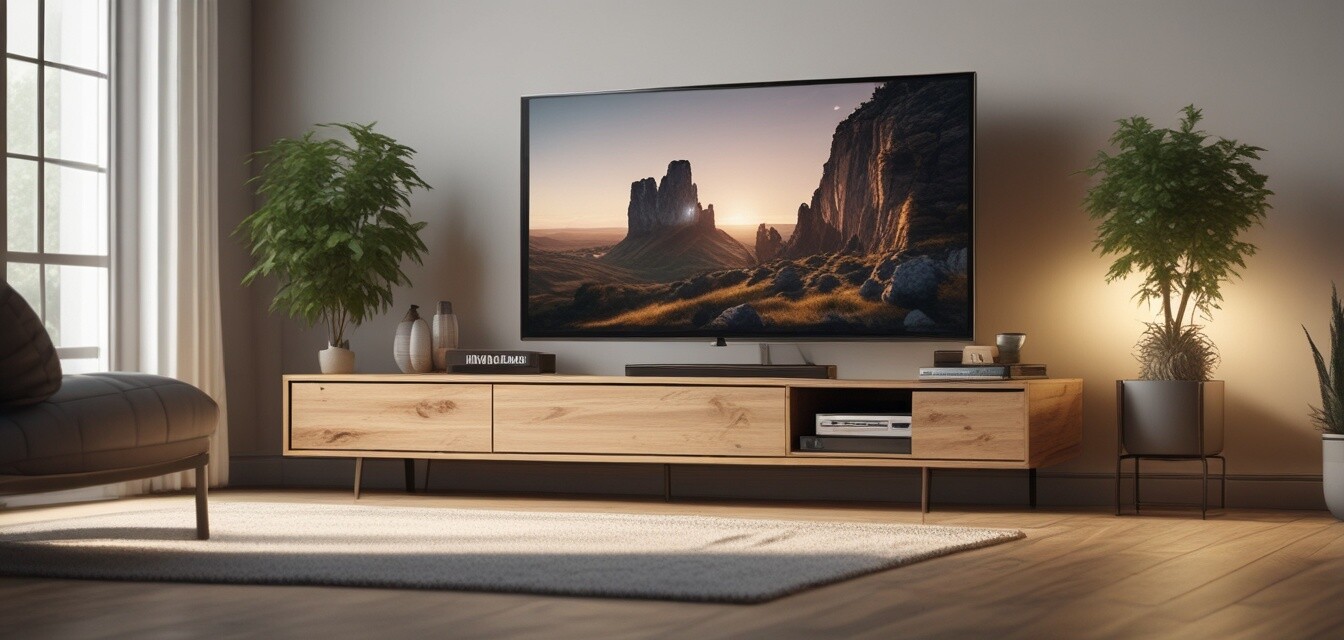
The Rise of Minimalism in Sustainable Furniture
Key Takeaways
- Minimalism focuses on simplicity and functionality while promoting eco-friendliness.
- Sustainable furniture is becoming a preferred choice among consumers.
- TV stands reflect the minimalist trend by using natural materials and clean lines.
- Choosing sustainable furniture can positively impact the environment.
- Emerging designs incorporate modular systems and multipurpose functionality.
The trend of minimalism in furniture design has gained significant traction over the past few years. As more consumers become aware of the environmental impacts of their choices, the demand for sustainable furniture has surged. In this article, we analyze the growing trend of minimalism in sustainable furniture design, focusing particularly on how it affects TV stand choices. This evolution reflects not only aesthetic preferences but also a commitment to eco-friendly living.
Understanding Minimalism
Minimalism is more than just a style; it is a lifestyle choice that emphasizes simplicity, functionality, and the reduction of excess. In recent years, minimalism has gained popularity not just in interior design but across various aspects of life. When applied to furniture, minimalism melds seamlessly with sustainability, creating a space that is both aesthetically pleasing and environmentally responsible.
Characteristics of Minimalistic Furniture Design
- Simple Lines: Minimalist designs favor straight lines and geometric shapes.
- Neutral Colors: A color palette of whites, greys, and earth tones is commonly used.
- Functionality: Each piece serves a specific purpose, reducing unnecessary features.
- Quality Materials: Preference for sustainable materials ensures durability and environmental responsibility.
The Shift Towards Sustainable Furniture
As consumers grow more conscious of their carbon footprint, there is an increasing preference for sustainable furniture. This trend is not limited to aesthetic appeal; it is driven by a desire to make ethical choices that benefit both the environment and personal health. Sustainable furniture often utilizes materials sourced responsibly, adhering to ethical manufacturing processes.
Sustainable Materials in Minimalism
| Material | Description | Environmental Impact |
|---|---|---|
| Reclaimed Wood | Wood salvaged from old furniture or buildings, upcycling it into new designs. | Reduces deforestation and promotes waste reduction. |
| Bamboo | A fast-growing grass that is highly renewable and durable. | Lower carbon footprint compared to traditional timber options. |
| Recycled Metal | Steel or aluminum that has been repurposed for new furniture. | Reduces mining and manufacturing energy costs. |
| Natural Fibers | Materials like organic cotton or hemp often used in upholstery. | Minimizes chemical use and promotes sustainable agriculture. |
Impact on TV Stand Choices
When it comes to selecting TV stands, minimalism plays a crucial role in shaping choices. Consumers are opting for sleek designs that blend seamlessly with their living spaces. Here are a few ways minimalism affects TV stand selections:
- Compact Designs: Rising urban living promotes the need for space-saving solutions.
- Modular Options: Items that can be combined or adjusted to fit various layouts are in demand.
- Focus on Function: The multifunctionality of furniture remains a priority for many households.
Why Choose Sustainable TV Stands?
Investing in sustainable TV stands not only helps the environment but also offers long-term economic benefits. Here are some reasons to consider:
- Durability: Quality sustainable materials prolong the life of your furniture.
- Healthier environment: Reducing chemical exposure affects indoor air quality positively.
- Trend adaptation: Minimalist and sustainable designs adapt well with evolving home decor.
Tips for Choosing a Sustainable TV Stand
- Research the product's materials and manufacturing process.
- Consider your space and look for compact, functional designs.
- Opt for multipurpose furniture that maximizes space utility.
- Check for certifications verifying sustainable practices.
- Choose brands committed to eco-friendly policies.
Pros
- Enhances living space aesthetics.
- Encourages environmentally responsible choices.
- Offers durability and long-lasting use.
- Supports local artisans and sustainable practices.
Cons
- Initial costs may be higher than traditional options.
- Limited options in specific styles or colors.
- Availability can vary based on local resources.
Conclusion
The rise of minimalism in furniture design, particularly in TV stands, signifies a shift towards eco-conscious living. Consumers are increasingly recognizing the impact of their choices on the environment and are opting for sustainable pieces that reflect their values. By understanding the key characteristics of minimalist design and prioritizing quality, individuals can create delightful living environments while contributing to a healthier planet.
For further exploration of various options within the minimalist trend, check out our categories on Corner TV Stands, Entertainment Consoles, and Wooden TV Stands. Embrace the future of interior design by making thoughtful choices today!